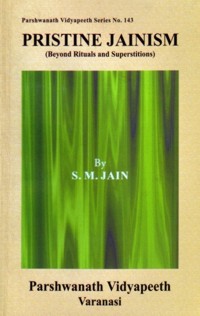The known history of mankind and even mythology and prehistoric records are replete with stories of conflicts, wars and misery to one and all. Saner persons Jains and others all through ages have been striving for mitigating the sufferings. These great thinkers evolved life styles and code of conduct, practised and lived themselves and advised people to follow it. But for the sobering impact of good saints and sages the picture would have been much more cruel and sombre. They have all stressed symbiotic relationships, mutualism not only among human beings but all living beings and even physical resources i.e. principle of give and take in such a way that it benefits both the giver and taker, limiting, minimising sensuous pleasures, wants, greed and suicidal consumerism. The cyclic changes, descending and ascending are in direct proportion to man's greed and vice-versa. It was the greed of man that destroyed the forests (Kalpavrikshas) and necessitated development and extension of agriculture. This changed the living pattern from commonality to individualism. With agriculture came the concept of individual property and ownership and the resultant feuds. Rakshasas the sections of people who protected forests and lived on naturally available resources were gradually defeated and annihilated. The practice of agriculture gained primacy, more and more extensive areas of forests were cleared and converted into agricultural fields. We read of Khandavdah (burning and clearing of forests) in Mahabharat. The processes continued till recently in India, U.S.A and all over the world and people were given liberal incentives to clear and convert forest lands into agriculture fields. Even now there are large scale encroachments on remnant forests because of pressure of population, vested interests of miners, industrialists and conniving politicians and bureaucrats.
In a situation when there is little or no food supply available from depleted or destroyed forest land, agriculture was necessary as a short term solution. But continuing dependence on agriculture, its extension has proved disastrous. There is yet no agricultural technology evolved so far which does not damage land. Tilling of land loosens soil and makes it prone to wind and water erosion. The irrigation systems dams etc big and small change the chemistry of soil, which inflicts people with various diseases. In mad race for agriculture it was extended and is continuing on steep slopes without terracing in tribal areas. The tribal could not eke out their existence on diminishing yields from agriculture on slopes and have been resorting to cutting trees. Most of land scape, the hills all over the country are naked and at many places bare rocks after erosion of entire soil cover. The modern high-tech agriculture has proved much more harmful. The indiscriminate uses of chemical fertilisers and poisonous pesticides have polluted air, soil and water systems both surface and underground. The fertility of soil is constantly decreasing because micro fauna of the soil, which maintain fertility, has been almost decimated. Soils now require more and more doses of chemical fertilisers crop after crop. The residual pesticide in cereals, fruits and vegetables are slowly poisoning human system, blood, and tissues and has reached even in chromosomes and genes, threatening with dire consequences. The harmful effect of high-tech agriculture, started with much fanfare, has manifested within 3-4 decades. The western countries, which started it, are now going back to organic agriculture and have banned several chemicals. However, developing countries and more so India is continuing the use of disastrous chemicals like DDT, BHC, Aldrin etc. Many beneficial species of birds and insects are getting extinct. Modern agriculture require profuse irrigation which has depleted water resources and over a major part of the country water table has receded alarmingly up to 1500' in Gujarat etc. There is water famine and even drinking water is scarce. At places like Chakrota and Manali etc. in Himalaya’s clean water would gush out just by inserting a small pipe anywhere on slopes but now there is problem of drinking water at these places and even at Cherapoonji the highest rainfall place. Such are the consequences of modern technology. Yet new dangerous technologies as genetic engineering are being promoted recklessly without proper evaluation and testing.
Growing Consumerism is unfortunately the index of development these days. High-tech inorganic agriculture and industrialisation has polluted soil, water and air beyond tolerance limits. greenhouse effect is raising the temperature. Protective ozone layer is rapidly decreasing. At this pace the planet earth may soon become uninhabitable.
 S.M. Jain
S.M. Jain
